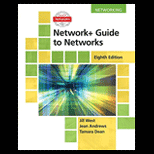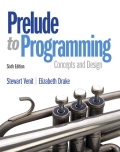In the file main.py write a class called Calculator that emulates basic functions of a calculator: add, subtract, multiply, divide, and clear. The class has one attribute called value for the calculator's current value. Implement the following methods as listed below: Default constructor method to set the attribute to 0.0 add(self, val) - add the parameter to the attribute subtract(self, val)- subtract the parameter from the attribute multiply(self, val) - multiply the attribute by the parameter divide(self, val)- divide the attribute by the parameter clear(self) - set the attribute to 0.0 get_value(self) - return the attribute Given two float input values num1 and num2, the program outputs the following values: The initial value of the instance attribute, value The value after adding num1 The value after multiplying by 3 The value after subtracting num2 The value after dividing by 2 The value after calling the clear() method
In the file main.py write a class called Calculator that emulates basic functions of a calculator: add, subtract, multiply, divide, and clear. The class has one attribute called value for the calculator's current value. Implement the following methods as listed below: Default constructor method to set the attribute to 0.0 add(self, val) - add the parameter to the attribute subtract(self, val)- subtract the parameter from the attribute multiply(self, val) - multiply the attribute by the parameter divide(self, val)- divide the attribute by the parameter clear(self) - set the attribute to 0.0 get_value(self) - return the attribute Given two float input values num1 and num2, the program outputs the following values: The initial value of the instance attribute, value The value after adding num1 The value after multiplying by 3 The value after subtracting num2 The value after dividing by 2 The value after calling the clear() method
Computer Networking: A Top-Down Approach (7th Edition)
7th Edition
ISBN:9780133594140
Author:James Kurose, Keith Ross
Publisher:James Kurose, Keith Ross
Chapter1: Computer Networks And The Internet
Section: Chapter Questions
Problem R1RQ: What is the difference between a host and an end system? List several different types of end...
Related questions
Question
23.2 LAB: Calculator class (Use Python)
In the file main.py write a class called Calculator that emulates basic functions of a calculator: add, subtract, multiply, divide, and clear. The class has one attribute called value for the calculator's current value. Implement the following methods as listed below:
- Default constructor method to set the attribute to 0.0
- add(self, val) - add the parameter to the attribute
- subtract(self, val)- subtract the parameter from the attribute
- multiply(self, val) - multiply the attribute by the parameter
- divide(self, val)- divide the attribute by the parameter
- clear(self) - set the attribute to 0.0
- get_value(self) - return the attribute
Given two float input values num1 and num2, the program outputs the following values:
- The initial value of the instance attribute, value
- The value after adding num1
- The value after multiplying by 3
- The value after subtracting num2
- The value after dividing by 2
- The value after calling the clear() method
Ex: If the input is:
10.0
5.0
the output is:
0.0
10.0
30.0
25.0
12.5
0.0

Transcribed Image Text:LAB
23.2.1: LAB: Calculator class
0/10
АCTIVITY
main.py
Load default template.
1 class Calculator:
2
# Type your code here.
4
5 if
name
== "_main_":
calc = Calculator();
numi = float(input())
num2 = float(input())
7
10
# 1. The iitial value
print('{:.1f}'.format (calc.get_value()))
11
12
13
# 2. The The value after adding num1
calc.add(num1)
print('{:.1f}'.format(calc.get_value()))
14
15
16
17
# 3. The value after multiplying by 3
calc.multiply(3)
print('{:.if}.format(calc.get_value()))
18
19
20
21
# 4. The value after subtracting num2
calc.subtract(num2)
print('{:.1f}'.format(calc.get_value()))
22
23
24
25
# 5. The value after dividing by 2
calc.divide(2)
print('{:.1f}'.format(calc.get_value()))
26
27
28
29
# 6. The value after calling the clear() method
calc.clear()
print("{:.if}'.format(calc.get_value()))
30
31
32
Expert Solution
This question has been solved!
Explore an expertly crafted, step-by-step solution for a thorough understanding of key concepts.
This is a popular solution!
Trending now
This is a popular solution!
Step by step
Solved in 4 steps with 3 images

Recommended textbooks for you

Computer Networking: A Top-Down Approach (7th Edi…
Computer Engineering
ISBN:
9780133594140
Author:
James Kurose, Keith Ross
Publisher:
PEARSON

Computer Organization and Design MIPS Edition, Fi…
Computer Engineering
ISBN:
9780124077263
Author:
David A. Patterson, John L. Hennessy
Publisher:
Elsevier Science

Network+ Guide to Networks (MindTap Course List)
Computer Engineering
ISBN:
9781337569330
Author:
Jill West, Tamara Dean, Jean Andrews
Publisher:
Cengage Learning

Computer Networking: A Top-Down Approach (7th Edi…
Computer Engineering
ISBN:
9780133594140
Author:
James Kurose, Keith Ross
Publisher:
PEARSON

Computer Organization and Design MIPS Edition, Fi…
Computer Engineering
ISBN:
9780124077263
Author:
David A. Patterson, John L. Hennessy
Publisher:
Elsevier Science

Network+ Guide to Networks (MindTap Course List)
Computer Engineering
ISBN:
9781337569330
Author:
Jill West, Tamara Dean, Jean Andrews
Publisher:
Cengage Learning

Concepts of Database Management
Computer Engineering
ISBN:
9781337093422
Author:
Joy L. Starks, Philip J. Pratt, Mary Z. Last
Publisher:
Cengage Learning

Prelude to Programming
Computer Engineering
ISBN:
9780133750423
Author:
VENIT, Stewart
Publisher:
Pearson Education

Sc Business Data Communications and Networking, T…
Computer Engineering
ISBN:
9781119368830
Author:
FITZGERALD
Publisher:
WILEY